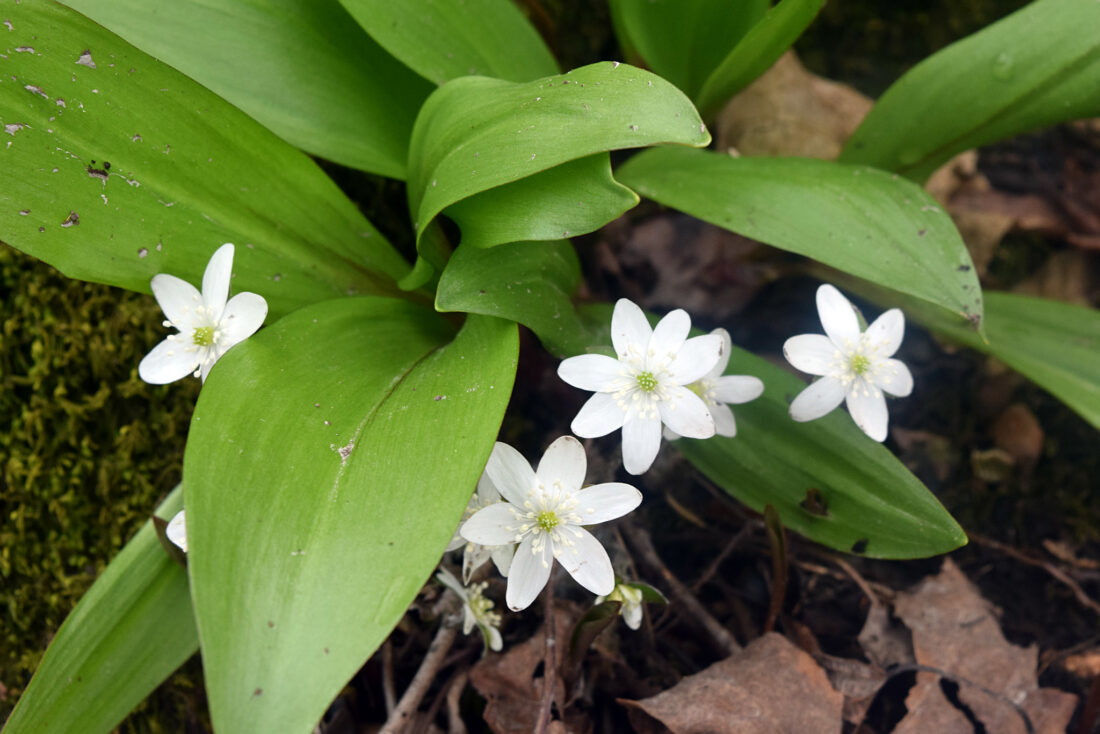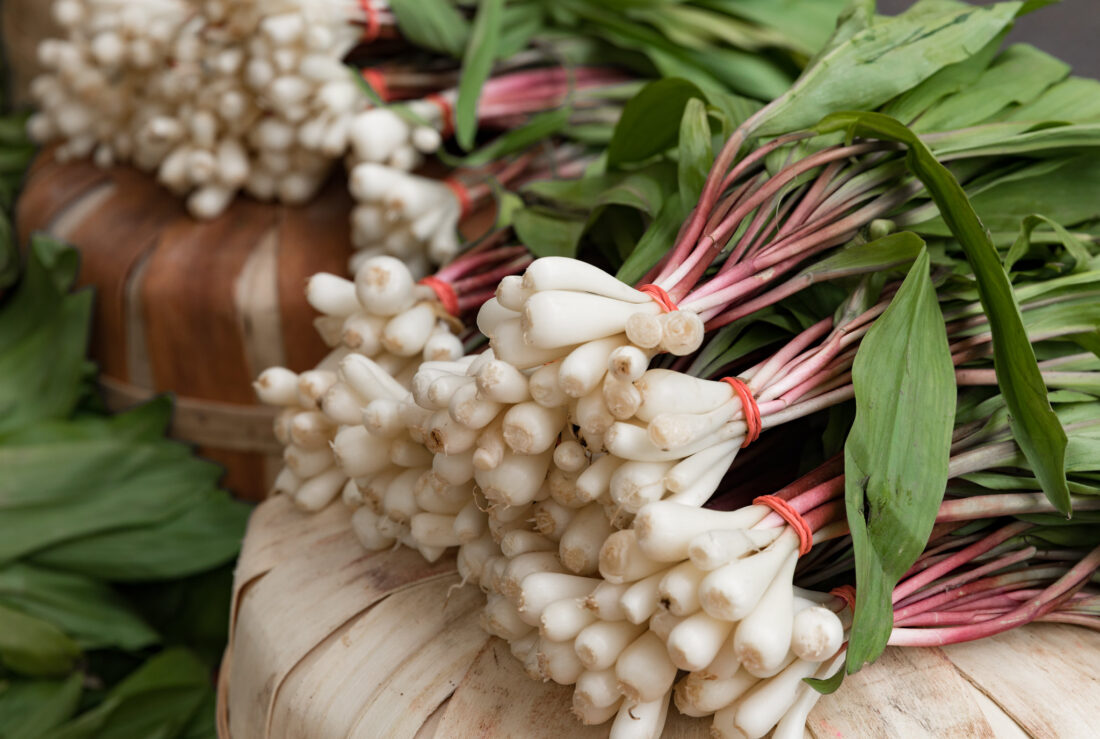Spring means ramps. These wild leeks (Allium tricoccum) are among the earliest edible greens to pop up in Eastern woodlands, and they’ve long been cherished as a seasonal delicacy—especially in Appalachia, where their arrival is celebrated with full-blown festivals (and very fragrant breath).
What Are Ramps, Exactly?
Ramps are a type of native wild onion that grow in rich, moist forests across the eastern United States and Canada. You might also hear them called wild leeks. They look like a cross between a scallion and lily of the valley: broad, tender green leaves, red-tinged stems, and a white bulb that packs a punch. Their flavor is somewhere between garlic and sweet spring onions—but stronger and more earthy.
They emerge briefly in early spring, often around the same time as daffodils or bloodroot, and disappear almost as quickly—making their window of availability short and precious.

Why the Hype? (And Why the Funk?)
In the Appalachian and southern mountain regions, ramps are a seasonal rite. Long celebrated as a spring tonic by both Indigenous communities and early settlers, they’re rich in vitamins and a literal breath of fresh air after a long winter of root vegetables. Festivals like the Feast of the Ramson and StinkFest in West Virginia or North Carolina’s Waynesville Ramp Festival honor both the plant and the enduring cultural traditions around it.
Be warned though: they’re famously pungent. Ramp lore includes tales of entire schoolhouses being sent home after a kid ate too many.
Fun Fact: Chicago Is Basically Named for a Ramp
It’s true. The Menomini referred to ramps as pikwute sikakushia—“skunk plant.” French explorers picked up on a similar name, Chicagoua, which referred to an area near the southern shore of Lake Michigan where the plants grew in abundance. Over time, that name stuck—and became Chicago.

Are Ramps Garden-Worthy?
Yes—but with caveats. Ramps are slow-growing and reproduce gradually through seeds and bulb offsets. In the wild, they form lush carpets over time, but in the garden, you’ll need patience.
If you have a shady, rich woodland-style spot with moist, humus-rich soil, you can absolutely grow ramps. Just know that it might be a few years before you get enough for a harvest. In the meantime, their glossy leaves and white umbels (flowering in early summer after the leaves disappear) make them a quietly lovely addition to native shade gardens.
Note: Because ramps are easily overharvested in the wild, never dig them up from natural areas unless you’re on your own land and you’re practicing sustainable harvesting (e.g., take no more than 10–15% of a patch).
Culinary Uses: Worth the Hype?
Chefs and foodies go wild for ramps. Their oniony, garlicky flavor works beautifully in pestos, omelets, compound butters, pickles, and pastas. They’re best fresh, but can also be preserved by freezing, pickling, or fermenting. You can often find them in farmers markets or specialty online shops like Earthy Delights during ramp season (March to May).
Bonus: they pair particularly well with other spring ephemerals like morels, fiddleheads, and asparagus (not just in the skillet but in the garden too – what grows together goes together).

Where to Find (or Buy) Ramps
- In the wild: Rich, deciduous forests in zones 3–7. Look for them in moist hollows under maples and beeches.
- At markets: High-end grocers, farmers markets, or online sellers during early spring.
- In your garden: Look for starts or ramp seeds from reputable native plant nurseries. Best planted in fall.
The basic Things to Know and Allium tricoccum:
- Botanical name: Allium tricoccum (or Allium burdickii, a narrower-leafed cousin)
- Zones: 3–7
- Light: Partial to full shade
- Soil: Moist, rich woodland soil
- Wildlife value: Early food source for pollinators; important cultural plant
Want to Celebrate Spring Like a True Ramp Fan?
There’s a festival for that. And yes, there are t-shirts.
Interesting post, thanks!
I would love any information on wild edibles native to New Hampshire and where to gather them.
I live in Rochester N.H. very close to the forests of conway.